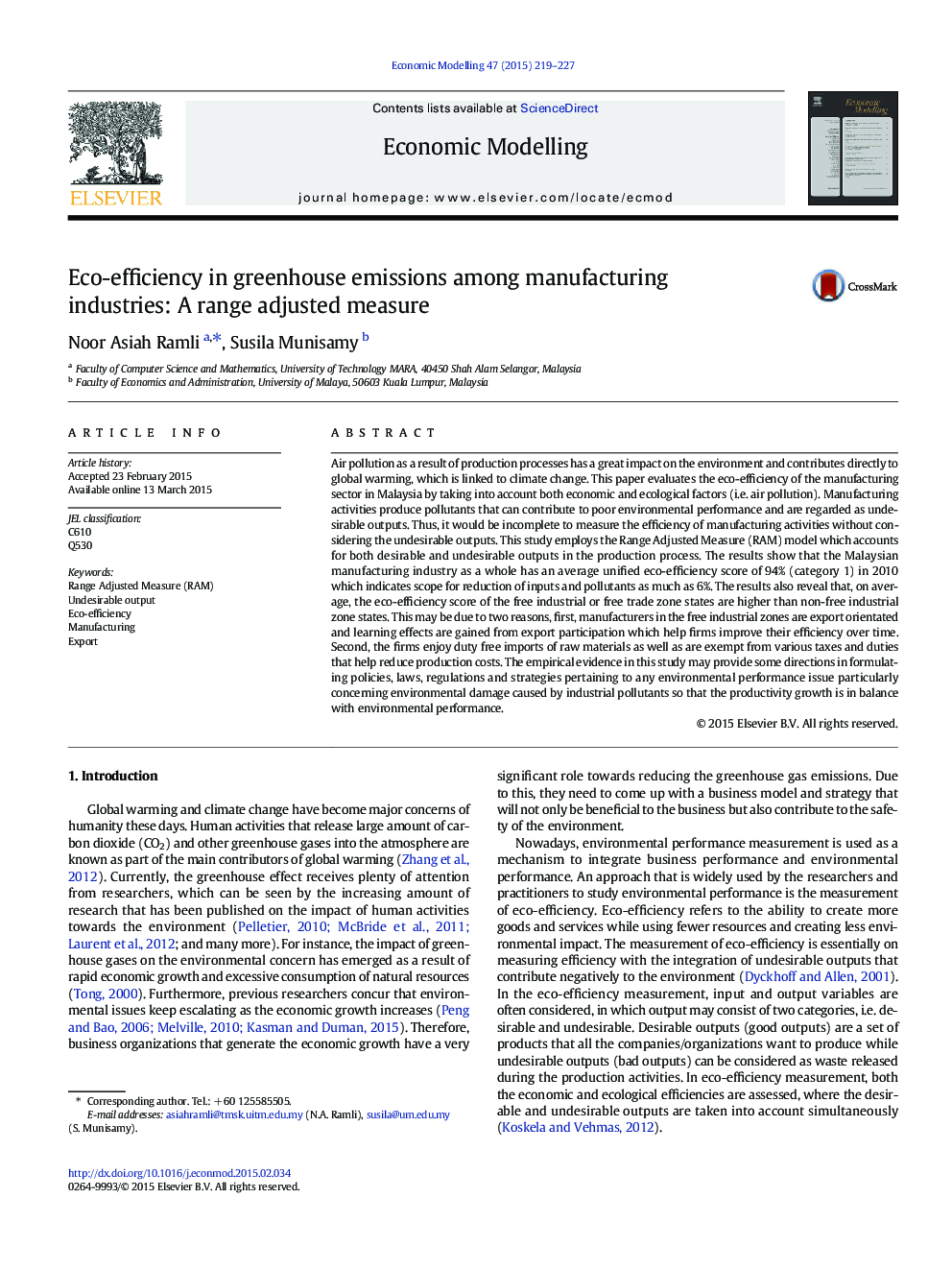| کد مقاله | کد نشریه | سال انتشار | مقاله انگلیسی | نسخه تمام متن |
|---|---|---|---|---|
| 5053914 | 1476521 | 2015 | 9 صفحه PDF | دانلود رایگان |
- Desirable and undesirable outputs are important in estimating eco-efficiency when emissions are discharged in any process.
- RAM model is employed to measure eco-efficiency of the manufacturing sector in Malaysia.
- The results show that the eco-efficiency score in the free industrial zone are higher than non-free industrial zone.
- The findings provide some insights to policies formulation so that the productivity growth is in balance with environmental performance.
Air pollution as a result of production processes has a great impact on the environment and contributes directly to global warming, which is linked to climate change. This paper evaluates the eco-efficiency of the manufacturing sector in Malaysia by taking into account both economic and ecological factors (i.e. air pollution). Manufacturing activities produce pollutants that can contribute to poor environmental performance and are regarded as undesirable outputs. Thus, it would be incomplete to measure the efficiency of manufacturing activities without considering the undesirable outputs. This study employs the Range Adjusted Measure (RAM) model which accounts for both desirable and undesirable outputs in the production process. The results show that the Malaysian manufacturing industry as a whole has an average unified eco-efficiency score of 94% (category 1) in 2010 which indicates scope for reduction of inputs and pollutants as much as 6%. The results also reveal that, on average, the eco-efficiency score of the free industrial or free trade zone states are higher than non-free industrial zone states. This may be due to two reasons, first, manufacturers in the free industrial zones are export orientated and learning effects are gained from export participation which help firms improve their efficiency over time. Second, the firms enjoy duty free imports of raw materials as well as are exempt from various taxes and duties that help reduce production costs. The empirical evidence in this study may provide some directions in formulating policies, laws, regulations and strategies pertaining to any environmental performance issue particularly concerning environmental damage caused by industrial pollutants so that the productivity growth is in balance with environmental performance.
Journal: Economic Modelling - Volume 47, June 2015, Pages 219-227
